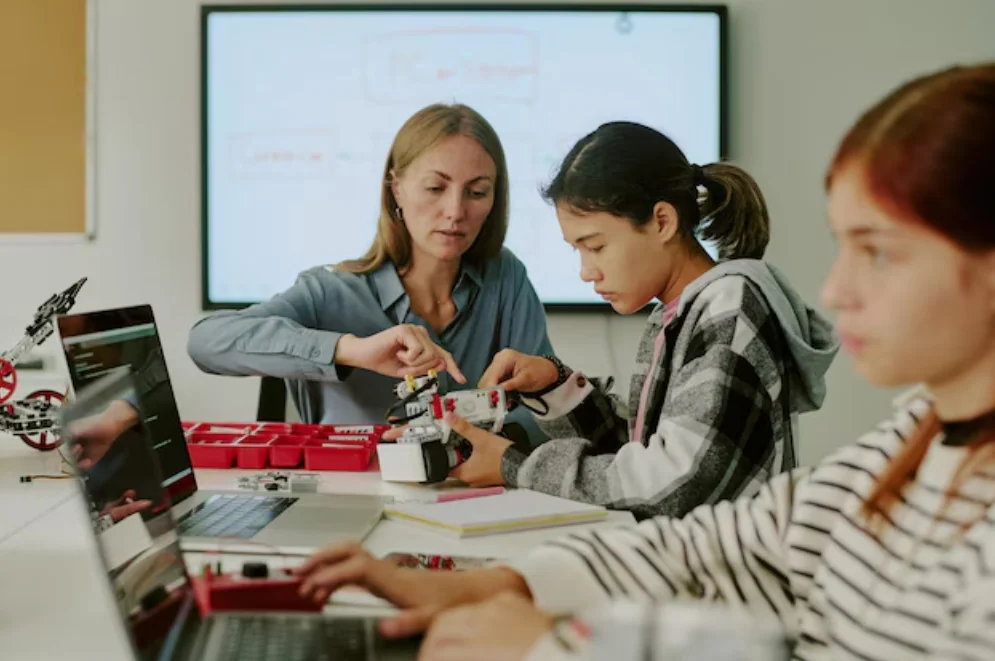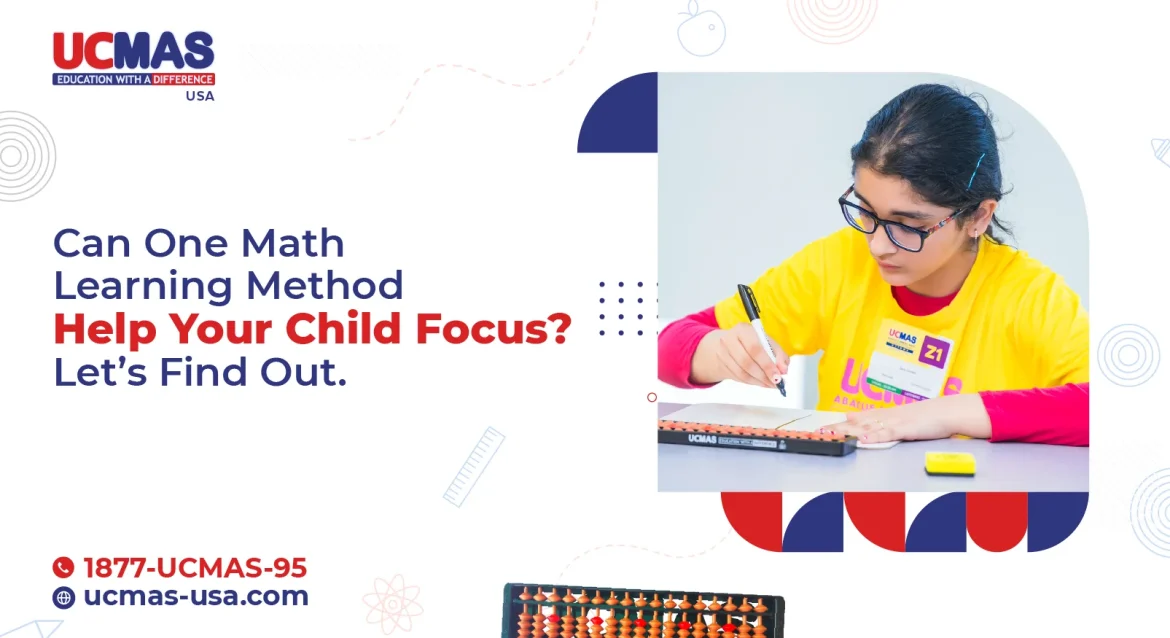They say the average human attention span today is just eight seconds, shorter than that of a goldfish. That stat, popularized by a Microsoft study, isn’t just a punchline anymore; it’s the reality parents face when trying to get their kids to focus on homework. In a world where every swipe, click, and notification competes for your child’s attention, keeping them engaged in subjects like math can feel like an uphill battle.
But what if the issue isn’t attention span, but the way we’re teaching? Traditional methods often can’t keep up with the stimulation kids are used to. That’s where UCMAS steps in – with engaging, brain-building tools like abacus math and a uniquely interactive format. With programs like online abacus classes, learning becomes less of a chore and more of an exciting brain workout.

What’s Really Behind the 8-Second Attention Span?
The infamous eight-second stat comes from a Microsoft Canada study, which linked our shrinking attention span to our increasing reliance on digital devices. But let’s be clear: kids aren’t losing their ability to focus. They’re just becoming highly selective about what they pay attention to.
Think about it: a child who struggles to sit through a 30-minute math worksheet will spend hours building worlds in Minecraft or solving complex puzzles in Roblox. It’s not about attention deficit. It’s about engagement. The solution isn’t stricter screen rules, it’s reimagining education to meet kids where they are. That’s exactly what UCMAS online abacus classes aim to do.
Why Traditional Math Teaching Falls Short
Let’s face it, most of us grew up solving math problems from a workbook, under the pressure of exams, with little real-world application in sight. While that may have worked in the past, it doesn’t cut it for today’s digital natives. The problem lies in passive learning.
When children are handed a worksheet and told to “solve 50 questions quietly,” their brains check out. There’s no immediate reward, no hands-on involvement, and zero novelty. Even worse, there’s often no feedback until it’s too late.
Compare that with abacus math sessions where children physically move beads, visualize numbers, and actively participate. It becomes a full-sensory experience that stimulates both the logical and creative sides of the brain.

The UCMAS Approach - A Game Changer for Focus and Engagement
What makes UCMAS stand out? It’s not just math; it’s cognitive training disguised as fun. With its structured methodology, UCMAS taps into the power of multi-sensory learning to improve focus, memory, and confidence. Here’s how:
- Auditory Learning: Students listen carefully to numbers being called out, sharpening their listening skills and auditory memory.
- Visual Learning: Beads on the abacus provide visual cues that help kids mentally picture numbers and calculations, activating spatial reasoning.
- Kinesthetic Learning: The act of moving beads engages muscle memory, which reinforces math concepts through physical activity.
The abacus online class format adds another layer of engagement by allowing children to interact with virtual tools, making remote learning just as effective.
- It enhances hand-eye coordination by having children manipulate virtual beads on the screen.
- Promotes accuracy and speed with time-bound challenges.
- Offers instant feedback, fostering a sense of achievement with every correct answer.
- Keeps motivation high through a series of small wins, building confidence with each session.
This isn’t passive screen time – it’s gamified learning that rewires the brain without the downsides of addictive tech.
Curious how it works? Check out the UCMAS Abacus Math Program to explore how it develops both sides of the brain.

Building “Sustained Attention” One Session at a Time
Unlike apps that flash dopamine-triggering animations, UCMAS builds focus the old-fashioned way – through practice and challenge. But it does it smartly.
Each session in the online abacus classes is carefully designed to stretch your child’s attention span just a little more than before. Over time, those 8 seconds become 15, then 30, and eventually full sessions where kids stay locked in, even enjoying the challenge.
As one UCMAS parent recently shared: “Before joining, my son could barely sit through 10 minutes of math. Now he insists on timing himself to beat his own record. I can’t believe the change!”
Want to ensure your child gets the most out of virtual learning? Here’s a checklist to master an online abacus class like a pro.
Why Kids Actually Love It
We often underestimate kids’ craving for achievement and stimulation. UCMAS delivers on both. The abacus transforms math from a dull task into a visual and tactile experience. Kids love sliding those beads, racing against the clock, and beating their own scores.
Even better, the abacus online environment includes group dynamics, friendly competitions, and global events where students from all over participate. That means your child isn’t just learning – they’re part of something bigger.
The Abacus Mental Math Glossary offers a closer look into the language and logic behind the system—an excellent resource for curious parents.
And if you’re wondering how to make all online learning more productive (not just abacus), don’t miss this blog on effective tips to improve online learning for kids.
While Others Scroll, Your Child Could Excel!
In a world where digital noise keeps getting louder, it’s easy to assume our kids have lost their focus. But maybe, just maybe, we’ve been offering the wrong kind of focus.
Online abacus math programs aren’t just teaching numbers. They’re rewiring attention spans, boosting memory, and turning math into a superpower.
So no, your child doesn’t have a short attention span. They just haven’t found the right way to learn yet.
Ready to see your child go from distracted to laser-focused? Book a free info session today!


